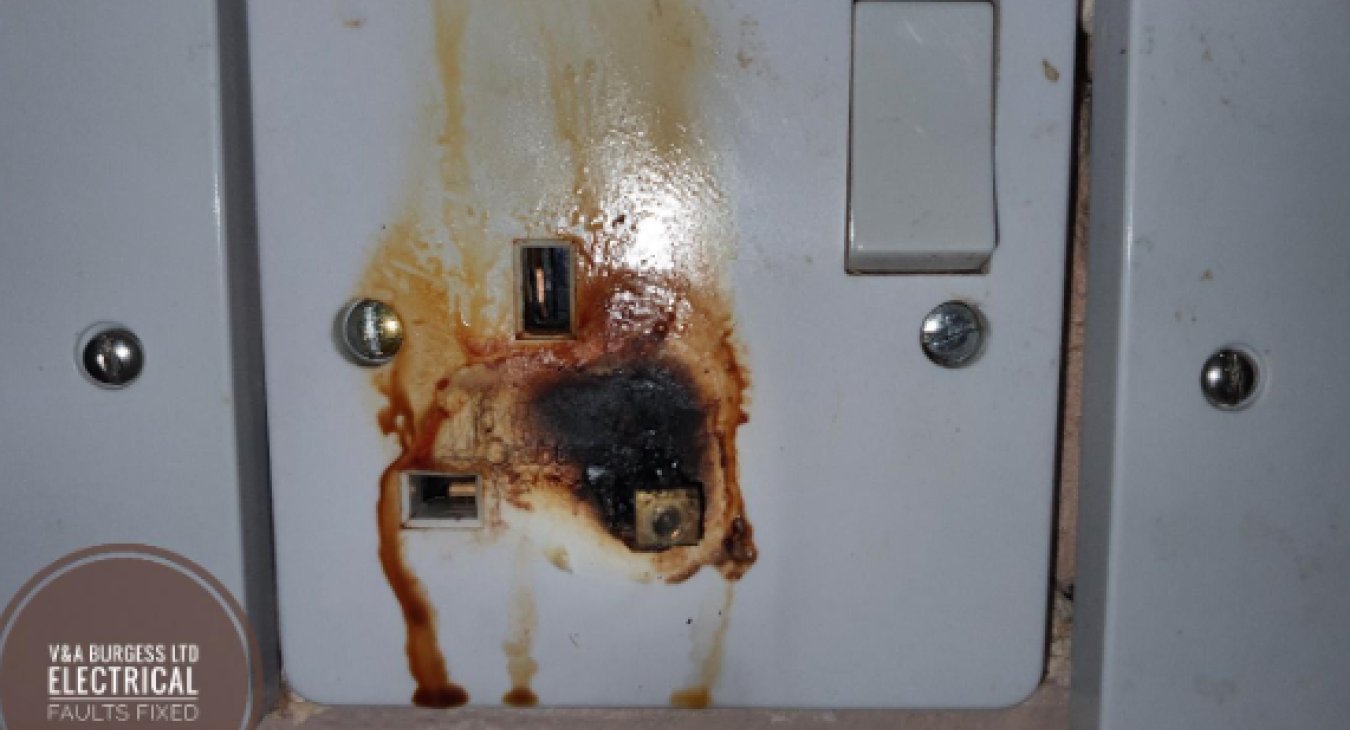
May 2024
Back to top1) Is a Hot Plug Socket a danger?
Electrical systems contain components such as a circuit breaker, electrical cable, plug sockets and other electrical accessories. During normal operation, these components are likely to warm up slightly, but when is heat too much heat? What is too hot?
An electrical circuit is designed and installed by a licensed electrician that has the relevant qualifications relating to enable them to carry out the installation according to the relevant building regulations and safety electrical wiring regulations.
Despite the calculations carried out prior to installation and necessary steps taken to prevent and foreseeable electrical problems, things do occasionally go wrong.
If you find a PLUG SOCKET GETTING HOT then there is likely to be a serious issue developing. The best and safest course of action to prevent fire or electric shock is to turn the plug sockets off AT THE mains trip switch in the consumer unit, electrical panel, or fuse box.
Locate the box in your home that has switches in like the photo below and turn off the plug sockets. Then call a professional electrician to come and assist you.
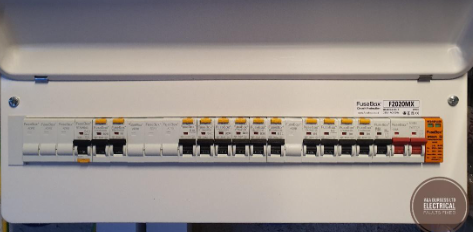
2) What are the possible causes of a HOT plug socket?
There are a number of causes for an overheating plug socket such as:
- Incorrectly sized fuse
- Loose wiring
- Worn out plug socket
- Electrical Overload
- Cables for Electrical Circuit incorrect
- Circuit Breaker Incorrect
3) Incorrectly Sized Fuse
Fuses to BS1362 that we all have in many plug tops in our homes are a bit of a quandary. For instance, a plug top containing a 13-amp fuse cannot continuously handle 13 amps safely for an extended period.
This doesn’t mean that the fuse will blow, but it will get hot and in doing so, transfer that heat to the plug top and the plug socket in which it is inserted.
There is a common issue with power strips or multi extension cords. The plug top is fused to 13 amps but can be easily overloaded by several appliances. To be sure that you are using your power leads, extension cord, extension lead and small appliances safely, check the interactive and easy to use calculator here provided by Electrical Safety First
If the fuse is too small for the loads presented to it then it is likely to overheat, this doesn’t mean that installing a bigger fuse is safe however, as the cable may not be able to carry more than the fuse allows.
Back to top4) Loose Wiring
Electrical current flows best when there is little resistance. A high resistance on an electrical circuit will impede the current flow causing cables, sockets and other electrical equipment to produce excessive heat and even lead to the risk of an electrical fire.
Where there are loose connections, there is an increase in electrical resistance. The looser the connections the worse it is. Plug pins on electrical appliances can add to the problem if they are damaged, worn or have become tarnished in some way. When metal surfaces tarnish, they tend to present a higher resistance to electrical current flow.
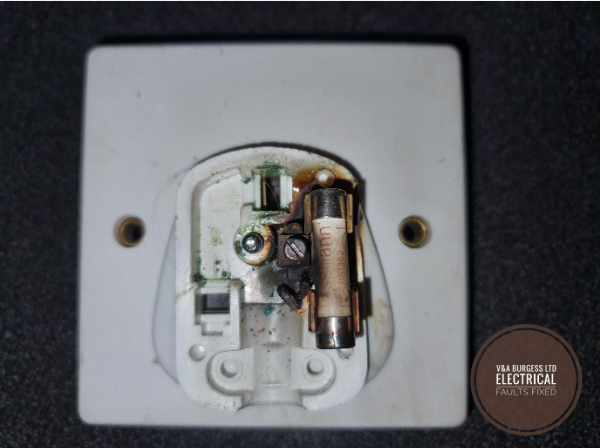
5) Worn Out Plug Socket
Different sockets will vary in quality, use, installation environment and exposure to wear and tear. In older homes it is common to find that the sockets may not all be the same brand, some may have been replaced as needed over time.
Kitchen plug sockets tend to get the most wear over their lifetime and combined with the large flow of electricity that a kitchen often demands, these plugs are subjected to the most wear and tear of any wall socket in the home.
Kitchens often present an increased risk of electrical danger as the combination of a whole lot of power, moist environment and difficult electrical installation conditions can make it more likely for faulty wiring to occur.
Back to top6) Electrical Overload
It is possible to overload a plug socket with more than 13 amps (unit of electrical current). Even most double sockets can only handle 13 amps and anything beyond this is just too much current. To put this in perspective a kettle will use up to 13 amps, a 4-slice toaster can use as much as 10 amps any appliance that uses a heating element is likely to draw a lot of electrical current and use a lot of power.
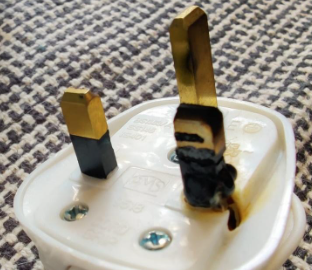
This will very quickly lead to a warm outlet and if the load is not removed, a hot outlet will result. This heat is a dangerous sign and a fire hazard with the risk of fire increasing with the longer the duration of use.
7) Cables for Electrical Circuit Incorrect
Under normal circumstances, a correctly designed electrical circuit by a professional electrician will have adequately sized cables to carry the required electrical load to the outlets and appliances. The electrical devices (circuit breakers and GFCI / RCD) will be selected correctly to ensure that the cables are adequately protected from overload.
Where cables are undersized, the circuit has been installed incorrectly or in some cases, poor DIY work has been carried out, there exists electrical danger.
An overheating electrical outlet will only be one of the symptoms in this case. Cables become warm during normal operation but cables that are undersized will be unable to dissipate their heat effectively and will not be able to cope with the electrical load that is placed upon them.
If the protective circuit device is also incorrect (oversized for the capacity of the cable) then an electrical fire is a certainty at some point in the circuits’ life. If you notice that a PLUG SOCKET GETTING HOT then have it checked immediately. It may be wise to go to the expense of a full electrical check.
Back to top8) Circuit Breaker Incorrect
The circuit breaker is installed at the origin of the electrical circuit in the electrical panel or consumer unit. The job of the circuit breaker is to protect from excessive electrical current and keep the cables working safely.
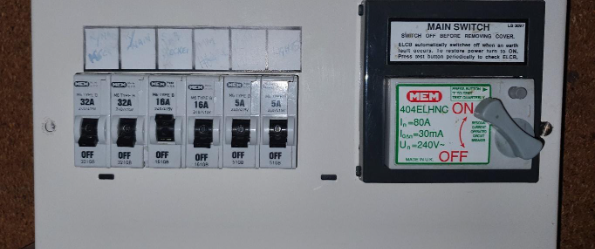
Circuit breakers will operate when there is a gradual overload such as too many appliances being used at the same time and the circuit breaker will also operate when there is a large and sudden overload of electrical current.
Large and sudden overloads of electrical current occur when there is a short circuit or a low resistance to earth.
Where the circuit breaker is rated at an amperage ABOVE what cables will safely carry, those cables are at risk of overheating, melting, and catching fire. During this time, electrical accessories will also overheat and you may notice a plug socket or other electrical accessory getting quite hot.
Back to top9) Summary
A PLUG SOCKET GETTING HOT is something of an electrical emergency and immediate action is necessary. For your peace of mind, call an electrician to inspect for a bad connection, loose wires, or poor circuit design.
The issue may be caused by an old appliance plug requiring a new plug to be installed or another minor fault but its best to have it checked.
An Overheating outlet is usually accompanied with a burning smell indicating that there may be cable damage behind the plug socket outlet as well as the outlet being damaged itself.
Now you now the warning signs and different reasons for an overheating plug socket, you can understand what may be required for your electrician to repair the problem.
Back to top









